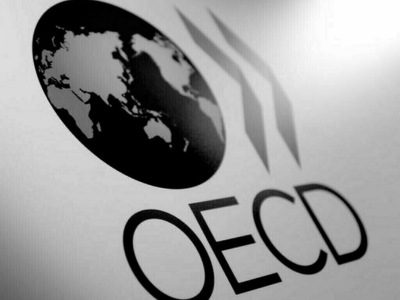OECD Trims Global Growth Forecast Amid Trade War Concerns
PARIS: The Organization for Economic Cooperation and Development (OECD) has revised its global economic growth projections downward, citing a greater than anticipated impact from trade disputes initiated by the U.S. administration. This adjustment reflects growing concerns about the health of the global economy.
The OECD now projects a slowdown in global growth from 3.3% in the past year to 2.9% for both 2025 and 2026. These figures represent a reduction from the previous estimates released in March, which forecasted growth of 3.1% for the current year and 3.0% for the upcoming year.
The organization cautioned that increased protectionism could further dampen economic prospects, potentially driving up inflation, disrupting international supply networks, and destabilizing financial markets.
“Further escalation in trade barriers or prolonged uncertainty in policy would additionally diminish growth expectations and likely amplify inflation, particularly in countries imposing tariffs,” stated OECD Secretary General Mathias Cormann during the report’s presentation.
Cormann warned that if the U.S. were to impose an additional 10 percentage points in bilateral tariffs across all nations, relative to mid-May levels, the global economic output could decrease by approximately 0.3% within a two-year span.
“In this environment, it is crucial to foster constructive dialogue aimed at securing a sustainable resolution to the ongoing trade tensions,” Cormann emphasized.
The U.S. President’s tariff policies since January have already had a destabilizing effect on global markets and increased economic uncertainty, leading to some revisions of initial positions.
Last month, the U.S. and China established a temporary agreement to de-escalate tariffs, and the U.S. also delayed imposing tariffs on the European Union until July 9.
The OECD anticipates that the U.S. economy will expand by just 1.6% this year and 1.5% the following year, based on the assumption that tariffs in place in mid-May will remain constant through 2026.
This latest projection for 2025 is notably lower than previous forecasts, which estimated growth of 2.2% for this year and 1.6% for the next.
The OECD cautioned that although new tariffs might incentivize domestic manufacturing, increased import costs would diminish consumer purchasing power, and broader economic policy uncertainty could impede corporate investments.
Additionally, increased tariff revenues would only partially offset revenue losses resulting from the extension of the 2017 Tax Cuts and Jobs Act, new tax reductions, and weaker economic expansion.
It is projected that the U.S. budget deficit could reach 8% of economic output by 2026 due to the President’s tax cuts and spending legislation.
As tariffs contribute to inflationary pressures, it is expected that the Federal Reserve will maintain current interest rates throughout this year and then reduce the federal funds rate to 3.25-3.5% by the end of 2026.
In China, the impact of U.S. tariff increases may be partially mitigated by government subsidies for a trade-in program on consumer electronics and increased welfare payments, the OECD stated.



Comments (0)
No comments yet. Be the first to comment!
Leave a Comment